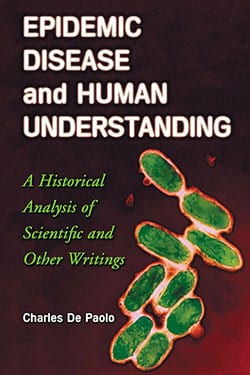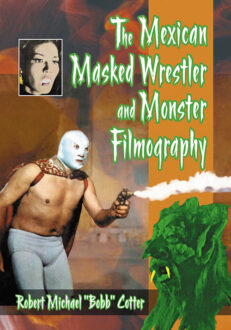Subtotal: $39.95
Epidemic Disease and Human Understanding
A Historical Analysis of Scientific and Other Writings
Original price was: $39.95.$19.99Current price is: $19.99.
In stock
About the Book
For more than three thousand years of recorded history, human beings have struggled to understand the epidemic—the rapid spread of a contagious disease throughout a human population. This book draws on an extensive list of primary texts to present a comprehensive history of epidemiological thought.
The book is primarily concerned with the human experience of epidemic disease and the various ways this experience has been conceptualized and communicated. Part I examines ancient religious, mythological and philosophical paradigms used to comprehend and interpret epidemic disease. Following the ancient period, perceptions changed; epidemics were understood as natural phenomena rather than as instruments of divine purpose. This transition is covered in Part II and illuminated by historical documents, such as Thucydides’ description of the plague of Athens. Systematic examination of biomedical phenomena, which began in the seventeenth century and developed into modern medicine, is the focus of Part III.
Finally, Part IV considers the ways in which epidemic disease has been treated in various works of literature. The discussion includes eyewitness accounts as well as such popular works of fiction as Sinclair Lewis’ Arrowsmith and Albert Camus’ The Plague. In surveying human responses to endemic disease, the book draws connections between three sub-genres of epidemiological writing: the encyclopedia, the intellectual history, and the biographical collection.
About the Author(s)
Bibliographic Details
Charles De Paolo
Format: softcover (6 x 9)
Pages: 268
Bibliographic Info: notes, bibliography, index
Copyright Date: 2006
pISBN: 978-0-7864-2506-8
Imprint: McFarland
Table of Contents
Acknowledgments ix
Abbreviations x
Introduction 1
Part I: The Pre-Conceptual Modality
1. The Hands of Dagon: Epidemic Anomalies in I Samuel 5–6 16
2. The Fierce Onslaught of Fate: Greco-Roman Pre-Conceptuality 27
3. The Sins of the Nation: Early Christian Pre-Conceptuality 38
Part II: The Observational Modality
4. Set Down Its Nature: Eyewitness Reporting in the Age of Pericles 47
5. The Province of Human Reasoning: Eyewitness Reporting and the Plague of Justinian 55
6. The Vast Estates: The Decameron of Giovanni Boccaccio 60
Part III: The Investigative Modality
7. Persons of Thought: Nathaniel Hodges and the London Plague of 1664–1665 71
8. The Topography of Inference 78
9. From Etiology to Synergy 103
Part IV: Eyewitness Reporting, Language, and Imaginative Writing
10. The Democracy of Affliction: Modern Eyewitness Reporting 153
11. The Language of Reason: Plague Extrapolations in Modern Fiction 172
12. A Just and Proper Tale: Figurative Language and Epidemiological Discourse 198
13. A Tangible Something: The Yellow Fever Construct 221
14. The Dynamics of Fear and the Mechanisms of Resistance 236
Works Cited 241
Index 251
Book Reviews & Awards
“thoroughly and extensively referenced”—The Times Literary Supplement.

 William Henry Hudson
William Henry Hudson 





